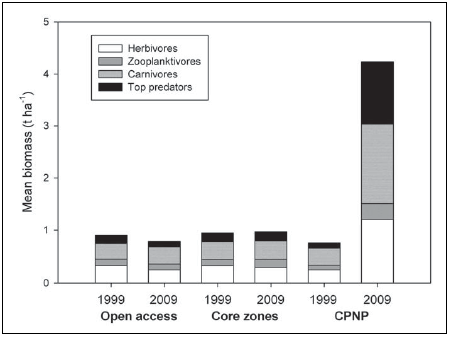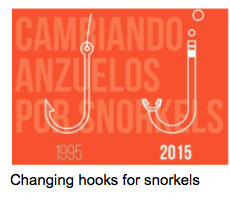Cabo Pulmo National Park contains the largest coral reef in the Gulf of California. Located on the east cape of Baja California Sur, Mexico, it’s renowned for its amazing diversity of marine life, and has unique rugged terrestrial features that contrast with the beauty of the ecosystem beneath the waves. It’s considered to be one of the most successful marine protected areas in the world, and has the highest concentration of fish of any in that area. What does it mean for this place to be a protected area, or a National Park? What drove its creation, and its success?
Taking charge of our natural spaces
For a long time, people and countries have valued the natural places around them and worked to save them from overuse and damage- whether on land or in the sea. A Canadian example that springs to mind is Banff: it’s an area of the Rocky Mountains that was found almost accidentally by railroad workers in 1883. Struck by its rugged beauty, the government decided to make it into a National Park for everyone to enjoy, and set rules to how people can enjoy it while preserving it. That’s part of the point of a national park: it’s a way for a state to identify important natural places and set rules for what happens inside.
We can look at the ocean in a similar way, with marine protected areas (MPAs): like National Parks, these are areas of the ocean set aside as important or valuable. Often they’re dedicated specifically to the protection of endangered marine species and their habitat, fishing resources, or areas of high diversity. An MPA can be considered successful when it has become rich and diverse with marine life due to the management and enforcement of the rules by local community members.
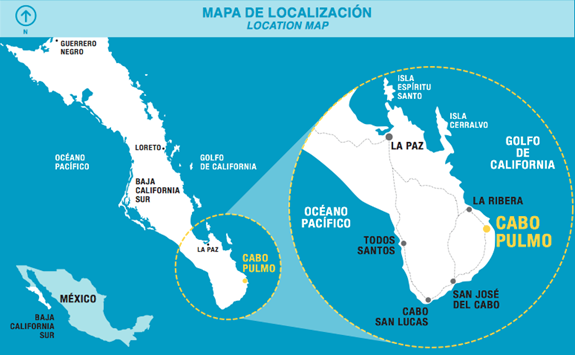
From pressure to protection
Even before the park was established, the reef of Cabo Pulmo was renowned for the sheer number and diversity of fish that inhabited it. The Pulmo reef is an important environment for an array of animals. Many of the species of sea turtles that exist in the world today come to the area to lay their eggs, including the leatherback turtle. Many migratory species such as humpback whales, manta rays and whale sharks stop by the reef these days, but there was a time when most of these species were absent from Cabo Pulmo.
In the 1950s, before the area was made a National Park, almost all families fed themselves with life from the reef and made a living as fishers, catching sharks, sea turtles, and other large fish. Cabo Pulmo and its reef are incredibly beautiful, and by the 1970s many people wanted to spend their holidays relaxing on the beach or fishing on the reef.
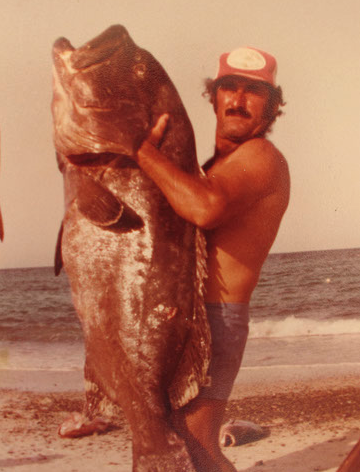
At the same time, the Mexican government was encouraging ever more fishing off the coast of the cape. All of these new people meant more fish than ever before were being taken from the sea, and the locals noticed that it was becoming harder to catch fish to feed their families or to sell.
As the community watched the life in their waters become less abundant over the years, they decided that the reef needed to be protected from too much fishing, and other human activity. Scientists also began coming to the area in the 1970s, and as they studied the reef they realized that it was home to many different species of marine animals. They agreed that it should be protected, and together the community of Cabo Pulmo and these scientists asked the government for help. Their concerns were well-received, and in 1995 the Cabo Pulmo National Park was created.
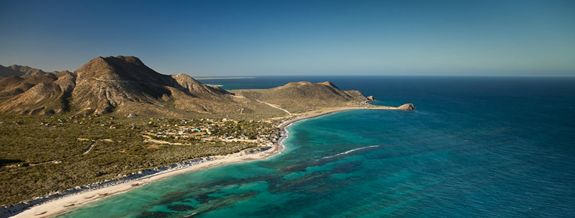 The East Cape of southern Baja California Sur, overlooking the town of Cabo Pulmo.
The East Cape of southern Baja California Sur, overlooking the town of Cabo Pulmo.
The community steps up
Although the government agreed to create the Cabo Pulmo National Park, they didn’t help the community to decide on what rules should be put in place or who should be in charge. The people of Cabo Pulmo had to work together to agree on what would be allowed in the park, and to make sure that locals, tourists, and other visitors didn’t break the rules. Because of the history of Cabo Pulmo as a place where both native Mexicans and expats from the U.S. and Canada have an interest, there have been different opinions about what the park should look like and what the rules should be. Some felt that fishing on the reef should be banned altogether, while others wanted to continue to use the ecosystem’s resources, just to a lesser degree. In the end, it was decided that catching fish from the reef to sell would not be allowed in the new park. This meant that the local people needed to change the ways that they supported themselves and their families. Many were interested in making Cabo Pulmo a place for a new type of tourism that placed emphasis on the protection of the natural beauty of the reef- a form of eco-tourism.
This kind of independent organizing happened between 1985 and 2000, with different groups within the community coming together, but struggling due to lack of resources. Then, after a brief time of no activity, the community group Amigos Para la Conservación de Cabo Pulmo (ACCP) was founded in 2003 to organize local efforts to manage the Cabo Pulmo National Park, given the continued lack of support from the government. It is the longest-lived of all the community organizations: today the group continues to work with organizations from all over the world to study and protect the reef. It provides educational programs for the youth who grow up in the area, and acts as a voice for the community, reaching out to the world to sharing the story of the reef. Their vision is to turn Cabo Pulmo into a “sea, land and people sanctuary”: a place where all three coexist and thrive. When a mass tourism project known as Cabo Cortés was proposed for the nearby resort town of Los Cabos about 60 km away, the ACCP was among the first to sound the alarm. Knowing that these sorts of projects could threaten the reef they’ve worked hard to protect, they joined forces with other environmental groups and pushed back against it. The campaign was a success: in 2012, the president of Mexico rejected the project.
Current research and the future of the park
In 2009, researchers who had studied the reef in 1999 returned to Cabo Pulmo to assess how the protection of the reef had impacted the species who lived there. The results surprised the scientists, and provided strong evidence that MPAs can lead to the recovery of marine life. They found increases in fish abundance of 463% overall, and 1070% for top predators specific. 20 years later in 2015, researchers continue to visit and study the area to see how it’s recovering and to ensure the allure of the reef for future generations.
Figure 2 Average biomass of fish trophic groups surveyed in 1999 and 2009 in each category in the Gulf of California (Aburto-Oropeza et al., 2011)
With the ecological legacy of the Pulmo reef secured, the residents of Cabo Pulmo are now turning to how they can continue to transform the economy and the terrestrial environment of their community to reflect their shared value of sustainability. It is agreed that their vision for the town does not align with the large-scale, unsustainable development that was proposed with the Cabo Cortés project, but what alternatives does this offer for the community moving forward?
A guiding principle of harmonious co-existence of land, sea and people has led residents to the development of sustainable eco-tourism, which will take the place of fishing as the primary economic activity of the area. In 2012, the ACCP created a Strategic Development Plan for tourism in Cabo Pulmo, with input from community members to address their diverse needs. As the ACCP and the town of Cabo Pulmo continue to gain expertise and resources, their focus has lasted to this day, giving strong voice to a community working to preserve their reefs.
Follow the authors on Twitter:
